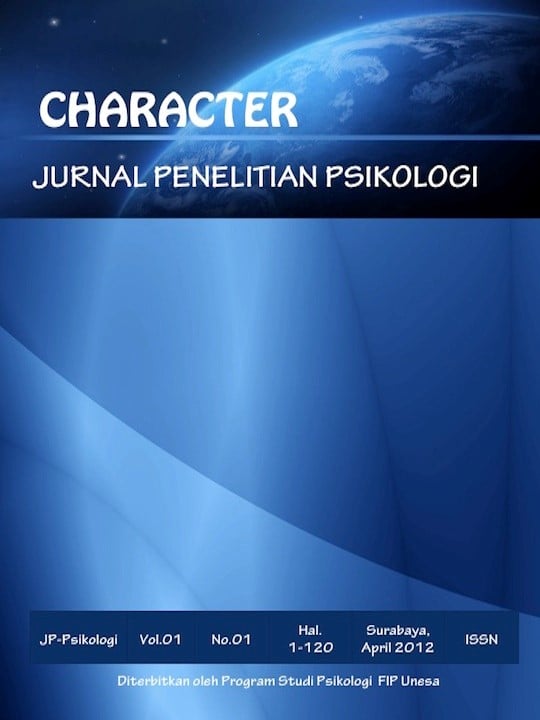HUBUNGAN ANTARA ATTACHMENT DENGAN SUBJECTIVE WELL-BEING PADA REMAJA AKHIR BROKEN HOME
DOI:
https://doi.org/10.26740/cjpp.v9i2.45820Abstract
Abstrak
Peningkatan angka perceraian yang semakin tinggi berdampak tidak hanya kepada hubungan suami istri, tetapi juga hubungan antara orang tua dengan anak. Situasi tersebut membuat terpengaruhnya tingkat kebahagiaan, kebingungan dalam pengambilan keputusan, stabilitas emosi, tuntutan untuk mampu menyesuaikan diri pada perbedaan pola asuh yang diterima, serta kurangnya pendampingan orang tua untuk anak terutama pada saat masa transisi perkembangan yang berdampak pada kesuksesan tugas perkembangan. Dampak perceraian dapat diminimalisir dengan peningkatan subjective well-being individu. Peningkatan subjective well-being salah satunya dapat berhubungan dengan nilai attachment. Peneliti mencoba menguji apakah terdapat hubungan antara attachment dengan subjective well-being pada remaja akhir broken home. Responden penelitian berjumlah 162 dengan kriteria yaitu rentang usia 18-21 tahun dan orang tua bercerai secara hukum. Penelitian dilakukan menggunakan metode kuantitatif dengan teknik pengambilan data menggunakan non-probability sampling method yaitu incidental sampling. Analisis hubungan dilakukan menggunakan pearson product moment dengan bantuan SPSS 23. Data menghasilkan nilai koefisien korelasi sebesar -0.557, artinya terdapat hubungan negatif antara attachment dengan subjective well-being pada remaja akhir berlatar belakang broken home.
Kata Kunci: attachment, subjective well-being, remaja akhir.
Abstract
The increasing divorce rate has an impact not only on the husband and wife relationship but also relationship between parents and children. This situation affects the level of happiness, confusion in decision making, emotional stability, demands to be able to adjust to the differences in parenting received before and after the divorce process as well as the lack of parental assistance for children during the developmental transition. The impact can be minimized by the subjective well-being of individuals. One of the things that can contribute to subjective well-being is attachment. Thus, this study tries to test whether there is a relationship between attachment and subjective well-being in late adolescence from a broken home. The research respondents were 162 and had meet the criteria for 18-21 years of age whose parents were legally divorced. The research was conducted using quantitative methods with data collection techniques using non-probability sampling method, namely incidental sampling. Relationship analysis using pearson product moment with the help of SPSS 23. Data analysis resulted in a correlation coefficient value of -0.557, meaning that there is a negative relationship between attachment and subjective well- being in late adolescence with broken home background.
Keywords: attachment, subjective well-being, late adolescence.
Downloads
Downloads
Published
How to Cite
Issue
Section
License
Authors who publish in this journal agree to the following terms:
Copyright in any article is held by the author.
The author grants the journal, publication rights with the work simultaneously licensed under a Creative Commons Attribution License that allows others to share the work with an acknowledgment of the work's authorship and initial publication in this journal.
Authors may enter into separate, additional contractual arrangements for the non-exclusive distribution of the journal's published version of the work (e.g., posting it to an institutional repository or publishing it in a book), with an acknowledgment of its initial publication in this journal.
Authors are permitted and encouraged to post their work online (e.g., in an institutional repository or on their website) prior to and during the submission process, as this can lead to productive exchanges, as well as earlier and greater citation of published work.
 Abstract views: 855
,
Abstract views: 855
, PDF Downloads: 1254
PDF Downloads: 1254





